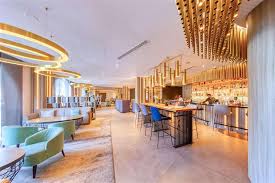
Sandstone blocks have been used for centuries as a building material due to their durability, aesthetic appeal, and versatility. This natural stone is a sedimentary rock composed primarily of sand-sized mineral particles, typically quartz, and often contains clay, silt, and other minerals. Sandstone blocks are a popular choice in construction projects ranging from ancient structures to modern-day buildings.
Origins of Sandstone
Sandstone forms from the accumulation and compression of sand grains over time, often in riverbeds, deserts, or coastal areas. Over millions of years, these grains cement together, creating a strong yet workable stone. The color of sandstone can vary, depending on the minerals present, with shades ranging from soft beige and white to rich reds, oranges, and browns.
Characteristics of Sandstone Blocks
Durability and Strength: Sandstone blocks are renowned for their strength, which makes them ideal for use in both structural and decorative applications. They are resistant to wear and weathering, with some types of sandstone being particularly resistant to erosion, which makes them a long-lasting building material.
Workability: One of the key reasons sandstone has remained a popular building material is its workability. Sandstone is relatively soft compared to other stones like granite, which makes it easier to cut and shape. This characteristic allows masons to create intricate carvings, detailed facades, and smooth, uniform blocks for construction.
Aesthetic Appeal: Sandstone blocks provide a natural, earthy appearance, which blends well with various architectural styles. The stone’s warm colors and textures can give buildings an elegant, timeless look. The color variation found in sandstone can create visual interest in walls, flooring, and facades, with unique veining and patterns enhancing its beauty.
Thermal Insulation: Sandstone blocks also provide excellent thermal insulation, keeping buildings cooler in the summer and warmer in the winter. This makes them energy-efficient materials for construction in both hot and cold climates.
Eco-friendly: As a natural material, sandstone is considered an environmentally friendly building material. It is locally sourced in many regions, reducing transportation-related carbon emissions, and can be recycled at the end of its life cycle.
Uses of Sandstone Blocks
Sandstone blocks are used in a wide variety of applications, from historical landmarks to modern-day construction projects.
Building Structures: Sandstone has been used for centuries in monumental architecture, including castles, temples, and bridges. Today, it remains a popular choice for building facades, walls, and even entire buildings.
Landscaping and Paving: Sandstone blocks are often used for landscaping purposes, including the construction of retaining walls, garden paths, and patios. Its natural texture and color make it a desirable material for outdoor settings, providing both practicality and visual appeal.
Monuments and Statues: Due to its workability, sandstone is commonly used for sculpting statues, memorials, and monuments. Some of the most famous sculptures and architectural features in history, including those in the temples of India and the ancient ruins of Greece and Rome, are made from sandstone.
Interior Design: Inside homes, sandstone blocks can be used to create feature walls, fireplaces, and flooring. Its natural tones and textures add warmth to interiors and blend seamlessly with a variety of design styles.
Types of Sandstone
While sandstone is generally a very durable and versatile stone, the characteristics of the material can vary depending on the source. Some of the most common types of sandstone include:
Red Sandstone: Known for its rich, reddish hue, red sandstone is often found in desert regions. It has been used extensively in iconic buildings such as the Red Fort in India and the University of Chicago.
Buff Sandstone: With lighter colors ranging from beige to yellow, buff sandstone is one of the most commonly used types for construction. Its neutral tones blend well with most design schemes.
Gray Sandstone: Gray sandstone, with its cool tones, is often used in modern architecture, providing a more subdued and contemporary look.
White Sandstone: This type is prized for its clean, crisp appearance. White sandstone is typically used in both residential and commercial projects for a sleek, minimalist aesthetic.
Sandstone Blocks in Modern Construction
Today, sandstone remains an excellent choice for many building projects, particularly in regions where the material is locally available. It is often used in combination with other materials like brick or steel to create a balanced, visually appealing structure. Its ability to withstand the elements makes it a preferred material for outdoor construction, while its beauty lends itself to interior design as well.
In modern architecture, sandstone blocks can be found in urban buildings, historic preservation projects, and luxury homes. They are commonly used for decorative facades, outdoor flooring, garden walls, and even modern sculptures.
Conclusion
Sandstone blocks are a timeless building material that combine durability, workability, and aesthetic appeal. From the ancient structures of the past to the contemporary designs of today, sandstone continues to be a popular choice for architects and builders alike. Whether used for large-scale construction or small, intricate details, sandstone remains one of the most versatile and reliable materials in the world of architecture and design.

 SURVEY
How Did You Hear About Us?
SURVEY
How Did You Hear About Us?





























Comments